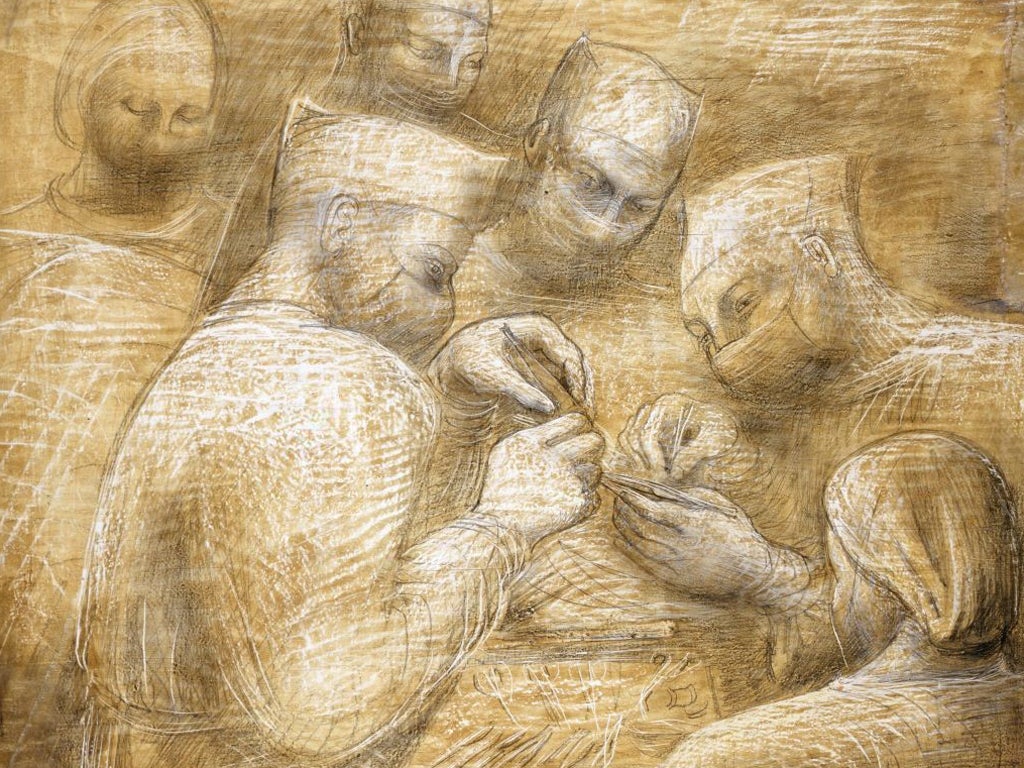Tate Britain to host first major exhibition of Barbara Hepworth in 50 years
The gallery will display works recently unearthed online

Your support helps us to tell the story
From reproductive rights to climate change to Big Tech, The Independent is on the ground when the story is developing. Whether it's investigating the financials of Elon Musk's pro-Trump PAC or producing our latest documentary, 'The A Word', which shines a light on the American women fighting for reproductive rights, we know how important it is to parse out the facts from the messaging.
At such a critical moment in US history, we need reporters on the ground. Your donation allows us to keep sending journalists to speak to both sides of the story.
The Independent is trusted by Americans across the entire political spectrum. And unlike many other quality news outlets, we choose not to lock Americans out of our reporting and analysis with paywalls. We believe quality journalism should be available to everyone, paid for by those who can afford it.
Your support makes all the difference.Tate Britain curators hailed the “age of Google” after their online research tracked down a “handful” of works believed lost for the first major exhibition on Barbara Hepworth, dubbed “one of Britain’s greatest artists,” in London for five decades.
The gallery will display works unearthed online including Figure, dating to 1933 and owned by a London collector, and the 1928 work Contemplative Figure in California.
Neither had been seen publicly since Hepworth’s last major show at Tate in 1968 and the curators hope more will emerge by the time the show opens.
Chris Stephens, lead curator of modern British art at Tate Britain, said: “Having spent a lot of time looking for lost sculptures for past projects, it’s wonderful to have the opportunity to come back in the age of Google and find what might have taken five years to track down, or not, can take a few days or weeks.”
The exhibition’s co-curator said that the works were both “crucial to different periods of her work” and added that “20 years ago that would have been a very difficult and convoluted thing to trace.”
Some early works were destroyed when Hepworth’s studio was bombed during the Second World War but “with these, we knew they existed somewhere but didn’t know where they are,” Dr Stephens said.
Penelope Curtis, director of Tate Britain and co-curator of the exhibition, said: “Works we looked for 10 or 20 years ago have now re-emerged... It was exciting for us to see works that we’ve always wanted to find and thought were lost, which have now turned up.”
Barbara Hepworth: Sculpture for a Modern World will also display seven collages by Hepworth for the first time, one of which was only discovered in the family collection only last week.
The show will seek to re-establish Hepworth as a prominent figure in the international art world. The sculptor, who died in 1975 at the age of 72, not only was hugely acclaimed in the UK during her lifetime, she had success abroad including in Latin America and Japan.
Dr Curtis said: “One of the objectives of the exhibition is to reposition Hepworth in an international context, rather than a local one.”
The exhibition opens in June and will feature more than 70 works. Most of the Hepworth archive is now at the Tate and the exhibition will draw on the family’s collection of photographs.
“We have had access to materials, particularly photographic materials that have not been in the public domain previously,” Dr Curtis said.
The curators said her sculpture was very different to Henry Moore’s with whom she had often been categorised. Dr Curtis said: “Whether she was a woman and therefore male critics were able to link her to the landscape in a way that was ultimately belittling in comparison to Henry Moore is a possibility.”
Dr Stephens added: “She is as important as anyone in British sculpture but the key question is how important is she in the international story of modern sculpture and her status in that, which was recognised in her lifetime, needs to be reasserted.”
Join our commenting forum
Join thought-provoking conversations, follow other Independent readers and see their replies
Comments